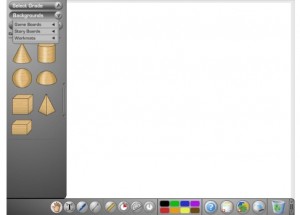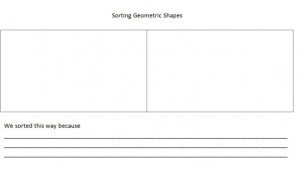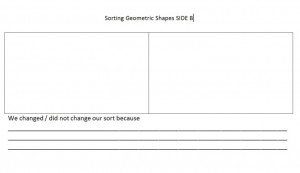All through my ETEC 533 journey I felt like Alice in Wonderland! I was excited, curious, awed, puzzled, thoughtful, and reflective as I went through a whirlwind of challenges within the course. Ever since I fell through this rabbit hole (the course), traveled through the enchanted forests of modules full of wonderful ideas and theories, chatted with my peers at the Mad Hatter’s Tea party (forums) about pedagogies and resources- many questions have been answered and formulated, many beliefs assessed and strengthened, some new ideas created, and multitudes of resources accumulated. Now as I face the final trial, I attempt to synthesize this journey to prove that I have matured as a student and a teacher and ask for my right of passage.
A perusal of my entries on the blog and the Vista forum confirm a definite trend in my thinking. From the very beginning my focus seemed to about applying technologies to enhance the learning in the classroom. I seem to focus on the means by which the learning process, content, and products could be woven into suitable technology and based in sound pedagogy so that the students benefit.
The Enchanted Forest
Quite early in the journey I question “Why cannot my entire class reap the benefit of such technology?” ( Auto e-ography) Then as I moved further into the course, I expressed my desire for a multimodal, interdisciplinary approach for meaningful use of technology to “create learning scenarios with inquiry based or problem based learning with technology which will allow students to learn and apply the math and science concepts that they are learning to relevant, real life situations, that will be create an immersive learning environment.” (Unpacking Assumptions) Such visions were enabled from the explorations of learning theories and experimenting with Constructivism during my long MET journey through eight previous courses.
As we moved on to Case studies and watched the interviews, what stood out for me was the collaborative group work and active learning happening in the class behind the teacher. The main theme emerging from my case analysis and interview seems to be how to use technology to set a constructivist learning environment. I asked questions about the role of technology in elementary education and within differentiating instructions. I think I showed little patience with people who kept asking about time for professional development. “We all complain about how schools /admin do not provide time to explore these technologies but most of us [in this program] have done it on our own time and out of our own interest. As professionals I think we need to go a bit above and beyond and not wait for schools or districts to guide our professional development. Look at the bunch of us here in MET!”[Jan 6]
When we ventured into the realm of TELE my focus still seem to have remained on the need of the learner. I deemed technology to be a tool that helps improve learning. On January 8th I discussed the need to differentiate instructions even with use of technology and not because of technology. “…There will always be some students at every level who may need a lot of guidance with technology.” I followed this on On Jan.10 with “I was thinking that we differentiate instructions according to student need – so can we also differentiate in use of technology? For example some use PowerPoint, some Prezi, and some Kidpix to make a slide show? What we would need to have in place is a generic criteria…. Thoughts?”
I relished and celebrated the addition of the tag “designer” to my job description on my blog! It was like being granted permission to embed technology into pedagogy to make “learning visible”. I found inspiration for this from Sugata Mitra’s TED talk which celebrated the power of collaboration and technology. I strongly believe that students need to construct their own knowledge through collaborative work and discourse. I envisioned that an ideal TELE space will provide for all learners to examine and explore knowledge, interact with it and others to understand it, and then apply the new knowledge in real environments – in their own style and at their own pace.
For this reason the Jasper Series totally impressed me as a model to follow and set my brain abuzz with ideas but the structured setup of WISE and the missing element of student-student or student- teacher interaction outside of assignments bothered me. However the cognitive implications reflected in the layer building in My World showed me how students could build schemas about science and math concepts step by step. The most significant learning happened for me when I encountered the LfU (Edelson, 2001) and T-GEM models (Khan, 2007) I realized how easy effective teaching can be and how easy it was to transition all these technologies into the classroom and enrich learning! Wasn’t that what I had been looking for in the first place? However, encountering Conrad Wolfram’s video had me think if technologies were robbing us of the computational experience. I am still wondering if we should free the brain from this menial task to focus on higher level thinking or teach them the computations to provide a deeper understanding.
Walking through module C, I felt like a child in a candy store! To realize that the plethora of virtual manipulatives, applets, simulations, haptic, and websites I was accumulating would enhance the learning of my students when embedded in suitable pedagogy. The cognitive theory of embodiment (Winn, 2003) resonated with me and I was able to see it working in T-GEM and LfU models. I was able to apply it immediately into my practice to see results. The feeling is one of euphoria!
Looking back, I realize that the entire trek through this enchanted forest was, perhaps subconsciously, driven by my framing issue. It was as if I wanted to prove to myself and the sceptics that technology in elementary education is effective. I had been told often enough that it was fluff, not as effective, and a bit premature. On the other hand I had seen and been told what a great tool it was! Till now I had not been able to clue into the reason for such discrepant views. The activities and reading of ETEC 533 solved this mystery for me! Technology is effective when and if embedded in sound pedagogy.
The Tea Party
The discussions in the forums made me realize the effectiveness of Community of Practice. We explored tools and researches, shared our experiences, discussed their effectiveness and learned together. My initial trepidation about relying too much on technology was shared “Technology can be a great teaching tool, when the teacher has the training to use it. However, teachers cannot forget the impact of real world activities.” (Darren Jan 10), and so were my concerns about its correct use. “However the effective integration of technology can be very challenging in real classrooms. Many factors come into play making technology integration a challenge.” (Valerie, Jan 7) The discussions lead me to examine my teaching practices when Janet said, “The more I learn about using technology in class, the more I think that it isn’t adding technology that is important, but rather, it is changing the way I teach that is important.”(Jan, 8).
I notice that when the conversation moved on to our experiences of experimenting with different technologies and their application, I keyed onto peer comments about teacher role and learning processes. I totally agreed with Denise when she said,” Educators will always be the most critical variable in student learning “(Feb 26), and Dr. Khan explained the need for teacher facilitation, ” The conclusion of this body of research on group work is that the teacher remains vital-in arranging for and monitoring collaboration, even if part of it occurs on-line or off. (March 3rd). These discussions re-emphasized for me – my responsibility and my belief in the Vygotskian theory about the Zone of Proximal Development.
Conclusion:
As I reflect on my learning and my beliefs I realize that I am trying to find the confirmation and sanction for what I am practicing and plan to practice in my teaching. For these I am looking at learning theories. In all the course readings I seem to gravitate towards the one that promulgate teaching methodologies and explain how students learn. LfU, T-GEM, mental models, embodied learning – seem to have become the essence of my learning and lately my practice. They have shown me how technology can fosters learning through good teaching practices. I had said on Feb 16, “I don’t think technology is at fault. It is a tool and we need to use it appropriately.” These theories and methodologies showed me what “appropriate” is!
Now the next step for me is to find suitable technologies. As Sarah said on Feb 28th,”online software is so rich with information and interaction there that one should be creative and use multiple outlets and points of view. I believe the web offers this and can be very useful for the learner”. I need to dive into this plethora of technology tools and find those valuable nuggets and polish them with good teaching practices to enrich the learning of the learners I facilitate.
A question I am still dealing with is about synthesis. As I reflect back on my own learning and connect the dots, I wonder if my students are able to connect the dots at the end of their learning. In their study Sugar& Bonk (1998) found that students had difficulty combining elements of the information learned in a new pattern so as to apply that knowledge to solve similar problems. I bring up this question on my blog as my last inquiry and look for possible explanations and solutions At this stage my hypotheses is that I might be able to aide this by providing opportunities for metacognition, but I am not sure.
As I shut the door on this course, I seem to find other doors I need to go through – to explore some other mysteries- to solve some other problems – to clarify some other confusion! This quest for knowledge is never ending. However I am sure I can use what I have learned here to unravel any questions, inquiries, and explorations in the future.
References:
Edelson, D.C. (2001). Learning-for-use: A framework for the design of technology-supported inquiry activities. Journal of Research in Science Teaching,38(3), 355-385.Retrieved from http://onlinelibrary.wiley.com/doi/10.1002/1098-2736%28200103%2938:3%3C355::AID-TEA1010%3E3.0.CO;2-M/abstract
Khan, S. (2007). Model-based inquiries in chemistry. Science Education, 91(6), 877-905.
Sugar, W. A., & Bonk, C.J. (1998). Student role play in the World Forum: Analyses of an Arctic adventure learning apprenticeship. In C.J. Bonk & K.S. King (Eds.), Electronic collaborators: Learner-centered technologies for literacy, apprenticeship & discourse (pp. 131-155). Mahwah, NJ: Lawrence Erlbaum Associates, Publishers
Pellegrino, J.W. & Brophy, S. (2008). From cognitive theory to instructional practice: Technology and the evolution of anchored instruction. In Ifenthaler, Pirney-Dunner, & J.M. Spector (Eds.) Understanding models for learning and instruction, New York: Springer Science + Business Media, pp. 277-303. http://ezproxy.library.ubc.ca/login?url=http://dx.doi.org/10.1007/978-0-387-76898-4_14
Winn, W. (2003). Learning in artificial environments: Embodiment, embeddedness, and dynamic adaptation. Technology, Instruction, Cognition and Learning, 1(1), 87-114. Full-text document retrieved on January 17, 2004, from: http://www.hitl.washington.edu/people/tfurness/courses/inde543/READINGS-03/WINN/winnpaper2.pdf





